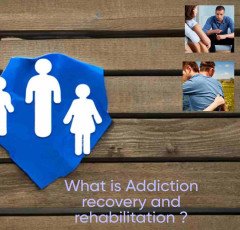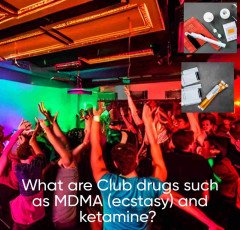
What is Prescription drug abuse and opioid epidemic ?

In order to treat pain, anxiety, or other medical disorders, doctors often prescribe prescription medications.
Prescription drug abuse refers to the misuse or excessive use of these medications. A prescription drug may be abused in a number of different ways, such as exceeding the recommended dosage, using it for purposes other than those for which it was intended, or utilizing it contrary to instructions (such as smashing pills and snorting or injecting them).
The term "opioid epidemic" describes the sharp rise in opioid abuse, addiction, and overdose fatalities in the US and other nations. Opioids are a group of pharmaceuticals that includes both legal and illicit substances like heroin, as well as prescription painkillers like oxycodone, hydrocodone, codeine, and morphine. The availability and usage of illegal opioids like heroin and fentanyl as well as the overprescribing and abuse of prescription opioids all contribute to the opioid epidemic.
Opioid addiction has had a terrible effect on people, families, and communities.
In addition to other detrimental health and social effects like elevated incidence of infectious diseases, criminal activities, and child welfare difficulties, it has caused a considerable rise in overdose deaths. Increased access to addiction treatment, overdose-reversing drugs, and measures to stop overprescribing and abusing prescription opioids are all part of the opioid epidemic response.
The opioid pandemic has had serious economic effects on people and society in addition to having detrimental health and social effects. Millions of dollars are thought to be spent annually on healthcare, criminal justice, lost productivity, and premature mortality.
Numerous initiatives at the federal, state, and municipal levels have been taken to combat the opioid epidemic.
Through better prescription procedures, increased access to addiction treatment and recovery support programs, and increased availability of overdose reversal drugs like naloxone, these initiatives have been aimed at limiting the supply of opioids.
Other interventions have included efforts to increase access to non-opioid pain management choices as well as public education programs to promote awareness of the dangers of opioid misuse and the value of proper storage and disposal of prescription drugs.
The opioid epidemic is still a serious public health concern despite these measures.
To handle this complicated and always changing problem, more research, creativity, and collaboration will be required.
Increased attempts have been made in recent years to address the root causes of the opioid epidemic, including poverty, unemployment, and social isolation. Numerous experts think that in order to effectively manage the opioid epidemic, attention must be paid to these social determinants of health as well as the underlying causes of addiction and substance use disorders.
There has been an increasing focus on the need to combat stigma associated with addiction and substance use disorders in addition to the socioeconomic determinants of health. Due in large part to the unfavorable opinions and impressions of others, many people who battle opioid addiction encounter tremendous obstacles when trying to get help and treatment. To make sure that everyone has access to the care and assistance they require to recover and rebuild their lives, it will be essential to make efforts to lessen stigma and foster compassion and understanding for people affected by the opioid epidemic.
Healthcare professionals, lawmakers, and community members will all need to continue working together to address the opioid epidemic because it is a complicated and multifaceted problem. We can continue to advance in minimizing the devastation brought on by opioid abuse and addiction by cooperating, and we can also advance the health and wellbeing of all people and communities impacted by this issue.
The creation of alternative pain-management techniques is a promising field of research for combating the opioid pandemic.
Nonsteroidal anti-inflammatory pharmaceuticals (NSAIDs), as well as complementary treatments like acupuncture and massage, fall under this category. In addition, medical marijuana is gaining popularity as a possible opioid substitute for treating chronic pain.
Enhancing access to resources for addiction rehabilitation and treatment, especially in poor and marginalized populations, is another key area of focus. This includes making evidence-based therapies like medication-assisted treatment (MAT), which combines counseling and other support services with drugs like methadone or buprenorphine, more widely available.
Harm reduction tactics, such syringe exchange programs and overdose prevention education, must also be a priority in efforts to combat the opioid epidemic. These tactics can lessen the harmful health effects of opioid use and help prevent overdose fatalities.
An ongoing focus on and response to the opioid epidemic is necessary because it is a complicated and multifaceted problem.
We can make progress in reducing the harm caused by opioid misuse and addiction and advance the health and well-being of all people and communities affected by this crisis by addressing the underlying causes of addiction and substance use disorders, promoting alternative pain management techniques, enhancing access to addiction treatment and recovery support services, and enacting harm reduction strategies.
The opioid crisis affects people all across the world, not only in the United States.
Opioid usage and associated hazards have increased significantly recently in many nations, including Canada, Australia, and portions of Europe.
In order to combat the opioid epidemic, it is imperative that governments and healthcare experts from all around the world work together and exchange best practices. This entails expanding access to addiction treatment and recovery support services, putting harm reduction tactics into practice, and promoting non-pharmacological pain relief techniques.
A holistic approach including all sectors of society is also necessary to confront the opioid epidemic, including individuals, families, communities, healthcare professionals, policymakers, and other stakeholders. We can continue to advance in solving this complex and dynamic issue by cooperating and utilizing the talents and knowledge of all sectors.
The opioid crisis is a serious public health issue that has wreaked havoc on people, families, and communities all across the world. A multifaceted strategy is needed to address this complex issue, including addressing the root causes of opioid misuse and addiction, promoting alternative pain management techniques, expanding access to addiction treatment and recovery support services, and putting harm reduction tactics into practice. We can continue to advance in minimizing the harm brought on by opioid abuse and addiction and enhancing the health and wellbeing of all people and communities impacted by this epidemic by cooperating with one another.
In order to combat the opioid epidemic, it is critical to understand the need for continual research and innovation.
This covers investigations into the neuroscience of addiction and pain as well as the creation of fresh, potent remedies for chronic pain and opioid use disorder.
Additionally, more money is required for public health and research programs that try to combat the opioid epidemic both domestically and internationally. This includes research on the social determinants of health that influence opioid abuse and addiction, funding for addiction treatment and recovery support services, harm reduction tactics, and alternative pain management techniques.
People, communities, healthcare professionals, governments, and other stakeholders must all continue to pay attention to and take action in response to the opioid epidemic since it is a complicated and multifaceted problem. We can continue to advance in tackling this epidemic and promoting the health and well-being of all people and communities affected by opioid abuse and addiction by collaborating and utilizing the talents and experience of all sectors.
Must acknowledge that the opioid pandemic has had an impact on opioid users' relatives, loved ones, and communities in addition to themselves. The opioid crisis has led to a sharp rise in overdose deaths as well as other detrimental health and societal effects like the spread of HIV and hepatitis C, elevated crime rates, and reduced economic productivity.
Adopting a public health strategy that takes into account the larger social and economic issues that lead to opioid usage and addiction is therefore essential.
This entails expanding possibilities for social support and community involvement, enhancing access to education and employment prospects, and addressing the underlying causes of poverty, trauma, and social isolation that can fuel substance use problems.
It's also critical to understand that the opioid epidemic is a reflection of broader societal problems, such as the overprescribing of opioids by healthcare professionals and the impact of the pharmaceutical industry on medical practice, and is not just a crisis of individual behavior or choice.
In order to combat the opioid crisis, it will be necessary to alter not only individual behavior and treatment procedures but also the larger social, economic, and political circumstances in which opioid usage and addiction take place.
An all-encompassing strategy is needed to address the social determinants of health, promote alternative pain management techniques, increase access to addiction treatment and recovery support services, implement harm reduction techniques, and address broader societal factors that contribute to opioid misuse and addiction. We can continue to advance in tackling this epidemic and promoting the health and well-being of all people and communities affected by opioid abuse and addiction by collaborating and utilizing the talents and experience of all sectors.
Addressing stigma and prejudice against those who have substance use disorders, including those impacted by the opioid epidemic, is also crucial. Discrimination and stigmatization can make it difficult for people to get the medical care they need, find supportive friends, and find work. They can also make people feel ashamed and alone.
As a result, efforts to combat the opioid crisis must put an emphasis on lowering stigma and discrimination against those who have substance use disorders.
This entails raising public knowledge of the numerous circumstances that contribute to substance use disorders, encouraging empathy and compassion for those who are addicted, and lessening unfavorable media portrayals of people who have substance use disorders.
Should understand that combating the opioid crisis is a long-term and continuous process that will need for persistent efforts from people, communities, healthcare professionals, legislators, and other stakeholders around the world. We can continue to advance in lessening the harm brought on by the opioid epidemic and promoting the health and well-being of all people and communities impacted by this crisis by cooperating and adopting a comprehensive strategy that addresses the primary causes of opioid misuse and addiction.
The opioid crisis is a serious public health issue that has wreaked havoc on people, families, and communities all across the world.
Adopting harm reduction measures, increasing access to addiction treatment and recovery support services, addressing the larger social determinants of health that contribute to opioid misuse and addiction, and reducing stigma and discrimination towards people with substance use disorders are just a few of the strategies that must be used to address this crisis.
To effectively combat the opioid epidemic, people, communities, healthcare professionals, policymakers, and other stakeholders from all over the world must maintain their commitment and work together. However, we can continue to advance in minimizing the harm brought on by the opioid epidemic and increasing the health and well-being of all people and communities impacted by this disaster by working together and making the most of the skills and knowledge of all sectors.
The COVID-19 pandemic has had a huge impact on the opioid epidemic, increasing overdose deaths and making it more difficult to get addiction treatment and recovery support services, it is also important to note. The pandemic has brought to light the need for more resources and assistance for those who are battling addiction, as well as expanded access to telemedicine and virtual care.
It's crucial to stay alert and flexible in order to respond to new problems and trends as we advance in combating the opioid epidemic.
This involves continued research and innovation in addiction treatment and recovery support services, as well as continual monitoring and surveillance of opioid-related harms and trends.
The opioid epidemic must be addressed in a comprehensive and coordinated manner, including many different sectors and stakeholders in order to achieve a shared objective. Even though there has been recent success, there is still much to be done to lessen the harm brought on by the opioid epidemic and to advance the health and wellbeing of all those who are impacted by it, both personally and as a community.
There are numerous tactics that people and communities can use to combat the opioid pandemic. These consist of:
Education for both you and others:
Find out the dangers of using and abusing opioids as well as the symptoms of opioid addiction. To aid in preventing opiate abuse and addiction, spread the word about this information.
Disposing of unwanted prescriptions appropriately:
In order to avoid opioids from getting into the wrong hands, unused or expired medications must be disposed of properly. You can do this by bringing them back to a predetermined drop-off spot or by employing drug take-back programs.
Promoting non-opioid alternatives to opioids for the treatment of pain:
Non-opioid alternatives to opioids for the treatment of pain include physical therapy, exercise, and non-opioid medicines. Promoting the usage of these tactics can aid in lowering the danger of opiate abuse and addiction.
Supporting individuals affected by addiction:
Individuals who are battling opioid addiction require assistance as well as access to services for addiction treatment and recovery. Supporting those who are struggling with addiction can help lessen the suffering brought on by the opioid epidemic.
The opioid pandemic can be addressed on a wider scale by advocating for policy changes that encourage harm reduction techniques, addiction treatment, and recovery support programs.
By following these steps, people and communities can support the fight against the opioid epidemic and advance the health and well-being of all those who are impacted by it.
Healthcare professionals can be crucial in combating the opioid problem in addition to these tactics. Medical professionals can:
Take care when prescribing opioids:
Healthcare professionals should take care when prescribing opioids and prioritize non-opioid pain management options. In order to prevent abuse and addiction, they should closely supervise patients who are given opioid prescriptions.
Check for substance use disorders in patients:
Healthcare professionals should check for substance use disorders in their patients and, if necessary, refer them to resources for addiction treatment and recovery support.
Provide evidence-based addiction treatment:
Patients with opioid addiction may get evidence-based addiction treatment from healthcare professionals, such as medication-assisted treatment (MAT). MAT combines counseling and behavioral treatment with drugs that lessen cravings and ease withdrawal symptoms.
Participate in prescription drug monitoring programs:
These programs allow healthcare professionals to track down people who may be at danger of abusing or becoming addicted to opioids.
Healthcare professionals can inform their patients about the dangers of opioid usage and offer them with information on resources for addiction treatment and recovery support services.
Healthcare practitioners may support the treatment and recovery of persons affected by the opioid epidemic as well as prevent opioid misuse and addiction by adopting these steps.
The opioid pandemic can also be addressed in large part by policymakers. Policymakers may want to take the following into consideration:
Accessing addiction treatment and recovery support services more widely:
Policymakers can seek to enhance financing and resources for these services as well as to increase access to them in underserved areas.
Adopting damage reduction measures:
Policymakers can adopt harm reduction measures include promoting safe injection places and expanding access to naloxone, a drug that can reverse opioid overdoses.
More stringent regulation of prescription opioids is possible, including limiting the number of opioids that can be prescribed and requiring the usage of prescription drug monitoring programs.
The wider social determinants of health, such as poverty, homelessness, and unemployment, that contribute to opioid abuse and addiction can be addressed by policymakers.
Promoting research and innovation:
Policymakers can encourage research and innovation in alternate methods of pain relief, addiction treatment, and recovery support services.
These steps can be taken by policymakers to address the opioid crisis more broadly and advance the health and well-being of all people and communities impacted by it.















 All Wireless Products
All Wireless Products  NordLocker
NordLocker  Favorite Company (Cuelinks)
Favorite Company (Cuelinks)  Smart Watches
Smart Watches  Online Marketing
Online Marketing  Hot Bags For Pain Relief
Hot Bags For Pain Relief  Amazon Best Selling Products
Amazon Best Selling Products  Best Home Appliances
Best Home Appliances  NordPass
NordPass  Kitchen Daily Use
Kitchen Daily Use  Wireless Gaming Mouse
Wireless Gaming Mouse  RPM 3.0
RPM 3.0  Motion Sensor Light
Motion Sensor Light  Apple iPhone
Apple iPhone  Kitchen Tap
Kitchen Tap  The Click Engine
The Click Engine  1150+Trendy kids coloring pages Bundle
1150+Trendy kids coloring pages Bundle  Puma (Clothing & Accessories)
Puma (Clothing & Accessories)  Artificial Intelligence
Artificial Intelligence  Healthy Ingredients
Healthy Ingredients  Men Clothing
Men Clothing  Wireless Bluetooth Earphones
Wireless Bluetooth Earphones  Home Decor Items
Home Decor Items  Creative Brief For Video Shoot
Creative Brief For Video Shoot  Only For The United States
Only For The United States  Bathroom Mirrors
Bathroom Mirrors  Essentials for Gamers
Essentials for Gamers  HP Laptop
HP Laptop  ASUS Laptop
ASUS Laptop  Unreal Engine 5 For Beginners Learn The Basics Of Virtual Production
Unreal Engine 5 For Beginners Learn The Basics Of Virtual Production  Wall Lamp
Wall Lamp  NordVPN
NordVPN  Hanging Lights For Living Room
Hanging Lights For Living Room  Best Phone
Best Phone  4k Projector For Home
4k Projector For Home  Smart Doorbell
Smart Doorbell  Stylish Sneakers by Red Tape
Stylish Sneakers by Red Tape  iPhone cable
iPhone cable  ASPINAL LONDON
ASPINAL LONDON  ELECTRONIC ACCESSORIES
ELECTRONIC ACCESSORIES  TitTok Revolution
TitTok Revolution  Online Technology Classes
Online Technology Classes  Best Robotic Vacuum Cleaners
Best Robotic Vacuum Cleaners  Wristbands
Wristbands  Echo Dot - Smart speaker with Alexa
Echo Dot - Smart speaker with Alexa  Graphics & Design
Graphics & Design  Realme Smart Phone
Realme Smart Phone  Rakhi
Rakhi  Air Purifier for Home
Air Purifier for Home  Unlimited access to classes on illustration, photography, design, film, music
Unlimited access to classes on illustration, photography, design, film, music  Best Selling Books
Best Selling Books  Samsung Mobile
Samsung Mobile  LCD Writing Tablet
LCD Writing Tablet  Adidas Shoes
Adidas Shoes  Women Fashion
Women Fashion  Top Rated From Amazon
Top Rated From Amazon  Prime Video
Prime Video  Duke T Shirts
Duke T Shirts  Acer Laptop
Acer Laptop  The Secret Email System
The Secret Email System  BEST SELLER TOP10
BEST SELLER TOP10  Sennheiser
Sennheiser  Door Handle Collection
Door Handle Collection  Pet Care Products
Pet Care Products  Hello Theme
Hello Theme  Best Sellers On Amazon
Best Sellers On Amazon  SOFAS
SOFAS  Dell Laptop
Dell Laptop  One World Collection
One World Collection  Crocs
Crocs  Dual USB Car Charger
Dual USB Car Charger  Digital Voice Recorder
Digital Voice Recorder  SEO Checklist
SEO Checklist 


















